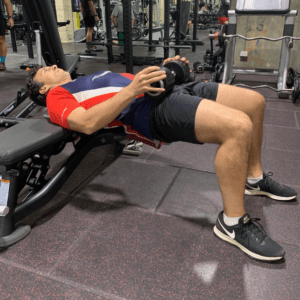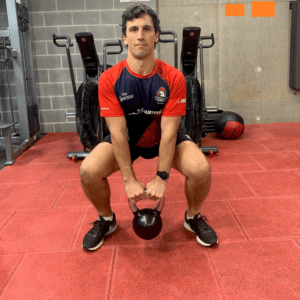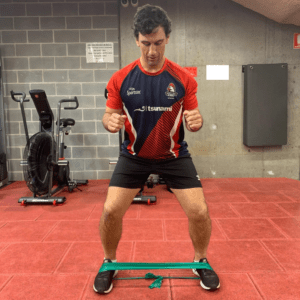In Part One of this blog series, we explored how to structure a weight training program to improve performance and prevent injury. This article will continue on from Part Two showing the correct technique for the specific exercises a runner should be doing.
Goblet squat:
- The starting position should include having your feet outside your hips with your shoulders back and spine straight, looking straight ahead.
- Hold the dumbbell or kettle bell in your hands, keeping your arms straight.
- Initiate the movement by pushing your hips back while keeping your chest up. As you descend into the squat push your knees outward and keep the weight on your heels.
- Stop just before the dumbbell makes contact with the floor and push briefly.
- Return to the starting position by driving through your heels.
- Plant your leg into the ground and maintain a slight bend in the knee.
- Hold a dumbbell in the opposite arm to the planted leg.
- Keeping that knee slightly bent, perform a stiff legged deadlift by bending at the hip, extending your free leg behind you for balance.
- Keep the shoulders back and back flat.
- Continue lowering the kettle bell until you are parallel to the ground.
- Return to the upright position by squeezing the glutes to rise and stand tall.
- Repeat on the opposite side.
- Place a loop band around the front of your feet, ensuring that there is enough tension in the band when your feet are shoulder-width apart.
- Sit back into a ¼ squat, keeping your chest up.
- Take a big step to the side and bring the other leg in slowly with control.
- After several steps walk in the opposite direction to the starting position
- The starting position is seated on the ground with a bench directly behind you.
- Lean back against the bench so that your shoulder blades are near the top of it and your arms are leaning on either side of the bench.
- Roll the bar so that it is directly above your hips and consider using a pad for greater comfort.
- Initiate the movement by driving through your feet and extending your hips as high as possible.
- The weight should be supported by your feet and shoulder blades resting against the bench.
- Reverse the motion to return to the starting position.
 Strengthening these muscles may prove effective in improving a runner’s performance and reducing the risk of injury. Structuring a weight training program based on the assessment of a physiotherapist may achieve better results. Please call us on (02) 9232 5566 or click here to schedule a consultation with one of our Bend + Mend Sports Physios in Sydney’s CBD.
Strengthening these muscles may prove effective in improving a runner’s performance and reducing the risk of injury. Structuring a weight training program based on the assessment of a physiotherapist may achieve better results. Please call us on (02) 9232 5566 or click here to schedule a consultation with one of our Bend + Mend Sports Physios in Sydney’s CBD.
All the best for the 2019 City2Surf and, most importantly, enjoy it!








